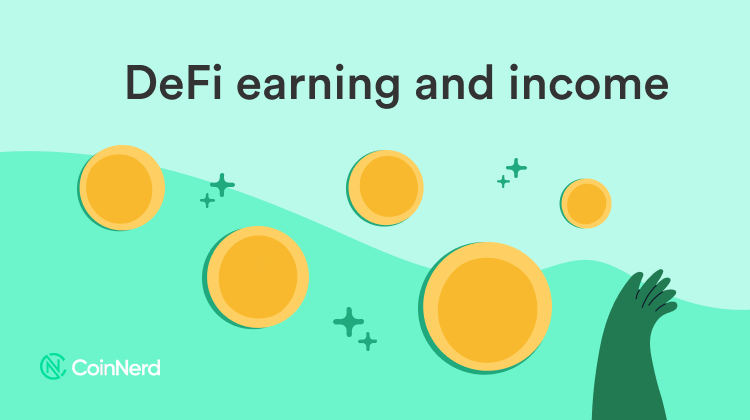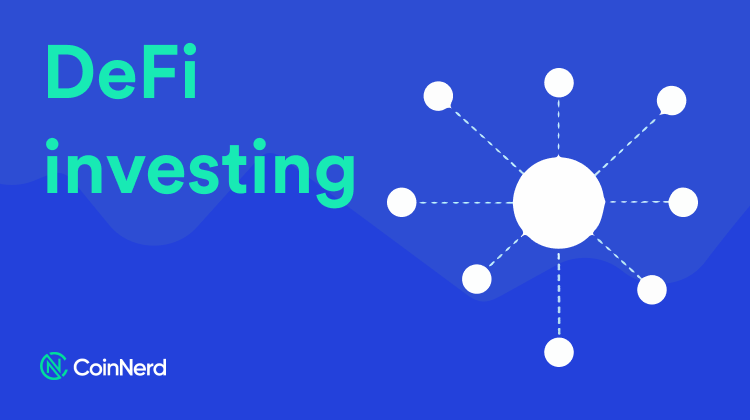Decentralized Finance: A Beginner’s Guide to Earning Passive Income
Decentralized finance (DeFi) has brought a whole new world to users who were previously limited in traditional finance (tradFi). These users can now earn nice profits through DeFi passive income and consistent profits in the blockchain space. DeFi creates a massive opportunity through the many constantly and rapidly evolving platforms.
Nevertheless, while DeFi presents a lucrative option to make handsome profits, it also has risks and limitations. It is crucial to understand the benefits and risks of decentralized finance to secure yourself from unknown and expected losses. This article will guide you through the blockchain’s most important and most popular passive income-earning opportunities, especially those around DeFi.
What Is DeFi?
Most people are conversant with traditional finance, but few know and understand what DeFi is all about. Also known as Open finance, DeFi takes the promise of traditional finance a step further by making entire financial systems more accessible and more open.

DeFi is finance built on top of the blockchain, and it provides loans, savings, trading insurance, and more financial products at a larger scale than traditional finance. With DeFi, these financial products are available and accessible to anyone in the world who has a smartphone or a computer and an internet connection.
How Does DeFi Work?
DeFi is not a machine, but rather it is a concept or initiative. When you take financial services and merge them with the blockchain, you get DeFi. Therefore, to describe how DeFi works, it is important to understand how blockchains work in the first place.
Blockchains work through the use of code. The most successful DeFi protocols are built on top of the Ethereum network, which uses programmable contracts called smart contracts. Smart contracts can execute automatically when specific conditions are triggered, and they enable developers to build complex blockchain software and platforms called decentralized apps (DApps).
DApps make DeFi services smoother and easier to use in the blockchain space. When financial products are integrated into a decentralized application, it becomes a DeFi product.
How to Earn DeFi Passive Income
There are many ways to make passive income through DeFi. However, please note that each of these options has benefits and risks. Well, here is a simple explanation of how you can earn some passive income through the DeFi revolution.
DeFi Lending or Yield Farming
This financial product allows users to borrow funds from defi protocols and return them with a small interest. The lenders or depositors are rewarded with a certain percentage of the fees charged to the borrowers. Hence, by depositing assets into defi protocols such as MakerDAO and Aave, the user can earn a lucrative annual percentage yield (APY) on their deposits, effectively making a passive income.
Let’s use Maker DAO as an example of how you can earn through DeFi lending. Maker DAO is one of the oldest defi protocols on Ethereum and the entire crypto space. MakerDAO is also a stablecoin project, which means that it has its stablecoin. A stablecoin is a cryptocurrency pegged to the U.S Dollar at a 1:1 ratio, and hence, the value of the stablecoin never deviates too far from $1.
MakerDAO’s stablecoin is called the DAI. Therefore, borrowing DAI from MakerDAO would be equivalent to customers taking out loans from their bank using the dollar. Due to this, MakerDAO functions as a decentralized reserve bank where one can borrow money in the form of the DAI token to spend or invest in other projects on the blockchain.
By making your assets available to these borrowers through the DAO protocol, you end up earning annual interest without even lifting a finger. Other protocols that allow for borrowing and lending include Compound, Balancer, and, recently, DYDX. The act of lending crypto assets to DeFi protocols and earning an APY in return is called yield farming.
Liquidity Mining
The second most lucrative way of earning passive income in decentralized finance is liquidity mining. It is a mechanism where participants on the different DeFi protocols can earn tokens or fees simply by providing some crypto-assets into the liquidity pools.
The defi protocol then calculates the number of tokens they have given and uses it to estimate the percentage of fees they would get from every trade. Examples of protocols that have employed this mechanism include Uniswap, an automated market maker (AMM), and decentralized exchange (DEX) on the Ethereum blockchains. Other DEXs for liquidity mining include IDEX, Paradex, Kyber, and 0x.

While all of them have different architectures, they employ the same concept when it comes to liquidity mining. Hence, users who would like to become liquidity providers for their favorite projects can visit any of the top AMMs or DEXs and search for pools for their crypto assets. They can then supply the assets to the pool contract to begin earning a share of the exchange fees.
Staking
Lastly, the third way of earning a passive income using your crypto assets on the blockchain is through staking. Staking has become a common way of making passive income for many projects and users on the blockchain.
Staking is a process by which users lock up their tokens in a smart contract for a certain amount of time. And while the tokens are locked up, the users earn a certain number of rewards depending on the number of tokens locked up. The staking rewards are paid out in more of the same token. Most of the time, the staked token is the native token of the defi protocol.
Many defi platforms are already using staking as a way of allowing and helping users in participating in the blockchain. Staking acts like a savings account where your crypto-asset funds the defi platform and it assists you to accumulate even more additional income. Staking is important because it provides a stable and reliable income stream through DeFi passive income.
Blockchains that use proof-of-stake (PoS) consensus algorithms allow users to stake them in the platform. The act of staking assets to secure the network is rewarded by more tokens. The more the staked tokens, the larger the possible return.
The staking rewards encourage users to continue locking their assets in the DeFi platforms for even longer. As of now, there are hundreds of billions of dollars staked across several DeFi protocols around the world.
Conclusion
Something important is happening in the blockchain space as DeFi rakes in more new money from traditional investors. As more developers build more sophisticated DeFi applications and systems, more people from traditional finance will get attracted and finally move onto the blockchain.
It is a giant leap in what is possible when it comes to new and emerging technologies. It is not every day that we get to witness an entire industry growing up from nothing. The defi space is already so far ahead with Ethereum leading the way.
In fact, over $120 billion is locked in Ethereum DeFi projects. Solana DeFi, in comparison, only has $8.08 billion in value locked. Over time, it won’t be easy to comprehend the advancements that will come when blockchain technology has fully matured. But before then, we can only watch and participate.
* We hope this information will help you in your investment process, but this is not investment advice. Every investment carries risk, especially in this industry, so DYOR before making a decision.






